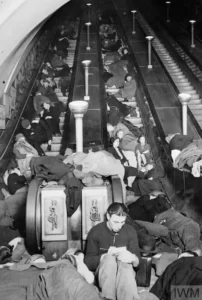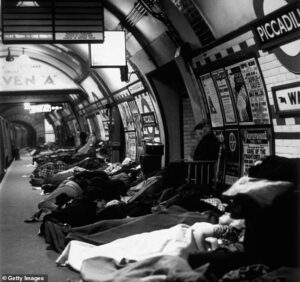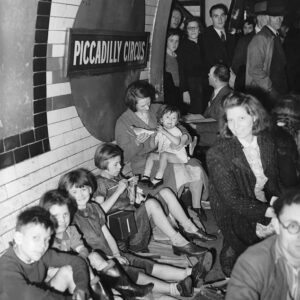Forgotten Friday – The Underground
In this week’s #ForgottenFriday we are delving underground to find out about the secrets of London during the Second World War.
During both the First World War and Second World War, the London Underground provided needed shelter from the chaos above. The danger of heavy air raids was experienced by civilians during WW1, when German airships and aircraft targeted the southeast and London. The threat was new as well of the casualties and destruction it caused, led hundreds and thousands to seek shelter in the Underground.

Londoners sought overnight refuge from bombing raids in underground stations © IWM HU94168
Although, by the Second World War, the extensive use of bomber aircraft against London and largely populated cities was highly anticipated. Although there was a lot of people nervous to use the Underground as a shelter from the raining bombs, the Blitz in 1940, drove people to the Tube stations. Furthermore, the provisions for keeping shelter in the Transport became more organised and even had refreshment areas for civilians to keep topped up with tea and other rations too! The Transport System was commissioned to build a series of deep-level shelters. These were used, along with the rest of the Underground during the German Offensive of 1944-1945.

Londoners Asleep – Getty Images
In the run up to WWII, the ARP plans were put in place, thus resulting in 1.25 million people evacuated from London in August and September 1939 to the countryside. This heavily depended on the London Transport System. With the worry of thousands entering the Underground decreasing morale, the Government did not anticipate encouraging civilians to enter the tube stations.
However, this all changed when the Blitz occurred. On the 7th September 1940, the first raid of the continuous bombing left 430 people dead and over 1,500 people injured. This resulted in thousands flocking to the Underground network, forcing a quick change in policy. Many of these spaces became a dual-purpose space, many even slept on de-electrified tracks.
Over time, the shelter in the Underground system became a lot better. The facilities were improved, ticketing was introduced to ensure fairness and stop overcrowding smaller spaces. There were even refreshments given to civilians sleeping in the Underground. This became a part of a person’s day to day life during the war.

Photo Credit to Daily Mail
Throughout the next eight months of the Blitz, there was terror, worry and angst against the enemy. The Blitz ended in May 1941. Over 30,00 civilians were killed in London, and many more across the whole of Great Britain.
Read more here – https://www.ltmuseum.co.uk/collections/stories/war/shelter-wartime

